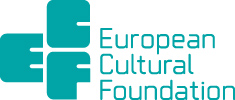
“პირიმზე”, სოფო ტაბატაძის პროექტი
საჯარო პრეზენტაცია გაიმართება ხუთშაბათს, 22 დეკემბერს 18.00 საათზე. მისამართი ათონელის 18ა (პირიმზის მიმდებარე ტერიტორია).
22, 23 და 25 დეკემბერს 19 საათიდან მოეწყობა დისკუსიები, მოხსენებები და პრეზენტაციები. დაწვრილებით ინფორმაციას გაეცანით გახსნაზე.
22-25 დეკემბერს გაიმართება მხატვარ სოფო ტაბატაძის პროექტის პრეზენტაცია. პროექტი ეხება 1971 წელს თბილისში აშენებულ და 2007 წლამდე მოქმედ საყოფაცხოვრებო მომსახურების კომბინატ “პირიმზეს”.
კვლევის მანძილზე სოფო ტაბატაძემ შეაგროვა პირიმზესთან დაკავშირებული დოკუმენტაცია. ეს მასალა მოიცავს ძველი პირიმზის არქიტექტურულ ნახაზებს, ამონარიდებს გაზეთებიდან და ტელერეპორტაჟებს პირიმზის შესახებ, ფოტო მასალას წიგნებიდან, ინტერვიუს ყოფილ თანამშრომელთან, ძველი პირმიზის პრივატიზაციის და დაშლის შედეგად აღმოცენებულ ახალ, პატარ-პატარა “პირიმზეების” ფოტოებს.
გამოფენის მსვლელობის დროს, 23-25 დეკემბერს, 12-დან 18 საათამდე, ათონელის 18ა ნომერში, მსურველებს შეეძლებათ სოფო ტაბატაძეს გაუზიარონ პირიმზესთან დაკავშირებული თავიანთი მოგონებები და ისტორიები. ასევე მიაწოდონ ფოტო, ვიდეო ან სხვა სახის პირიმზის ამსახველი მასალა.
Pirimze building was built in 1971 in Soviet Georgia. It had 6 floors and handworkers all kinds were employed there. Basically everything could be repaired here, shoes, watches, glasses, jewelry, bags, suitcases, belts, hairdryers, kitchen machinery… Knifes and scissors could be sharpened here, hair could be cut and shoes polished. Sewers of fur, leather and fabric would sew individual closing for costumers.
People in the whole city knew Pirimze and costumers from villages would use Pirimzes services as well.
From inside it was amazing place. All the handworkers had their private-like booths. These booths had personal interiors - covered with cut-outs from foreign glossy magazines, photos of naked girls, hand drawn advertisements.
This visual fascination of the place made me decide to re-construct the place while still alive in the minds of people who worked there. After meeting people who worked there it became clear that the problem of destruction hided larger picture and that social and political agendas of different players involved in this process.
In summer 2007 all the workers were dismissed from their work and Pirimze was torn down. In the place of old Pirimze now stands “Pirimze Plaza”. The word plaza is used in Georgian language, it is a foreign word, showing the direction Georgia is taking, changing names into exotic sounding definitions without changing people or fundamental direction. “Pirimze Plaza” will be yet another shopping centre, and business offices (makes one wonder how many successful business offices are around). Some handworkers from the old Pirimze will also be employed there against paying high rent and getting a small workplace in seller with no daylight.
The interviews with former employees show an interesting parallel of what has happened to the building together what is happening to the whole country.
Resarch phase:
October 17-December 21, 2011
During the research phase I have collected all sort of information about Pirimze. At this moment collection consists of architectural sketches of old and new Pirimze; Photos and videos 10s of smaller shops that emerged bearing the same name Pirimze scattered in the surroundings of old Pirimze; Information about the location and photographs of old Pirimze from the architectural books and newspapers; Drawings made of the construction during the transition from old to new Pirimze; Photos and video collages made by former workers. As well as my interview with former Pirimze worker and active fighter for workers rights Koki Beridze, and counter interview where Koki Beridze interviews me. TV reportages and newspapers covering the fight of the old workers and unfairness of new owners. Marquette’s of the interior and exterior of the building.
December 22-25
Presentation of the research phase to Georgian audience and lecture series.
Lecture series:
22 December at 19.00 “Architecture as result and definer of social processes” - speaker Levan Asabashvili, architect.
23 December at 19.00 “Collective effort - good case scenario” meeting with dentist Nana Mumlauri, whose colleagues were able to keep their workspaces after privtisation.
20.00 ”Argentina Worker Cooperatives – Industrias Recuperadas” – exert from the film about Argentinian Aluminium factory, in which the workers were able to occopy the factory where they worked and are collectively ruling it.
25 December at 19.00 “Collective and post-Soviet reality” – speaker Zviad Avaliani, political studies.
This project was supported by:


This project has been funded with support from the European Commission. This communication reflects the views only of the author, and the Commission cannot be held responsible for any use which may be made of the information contained therein.


















